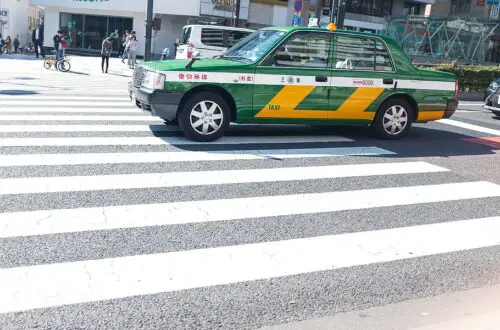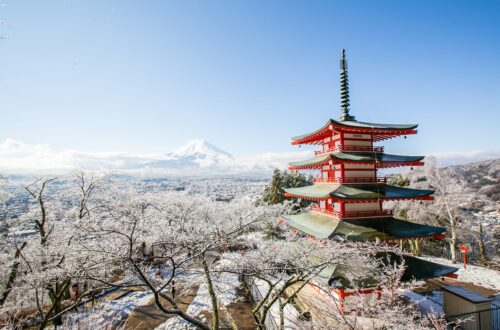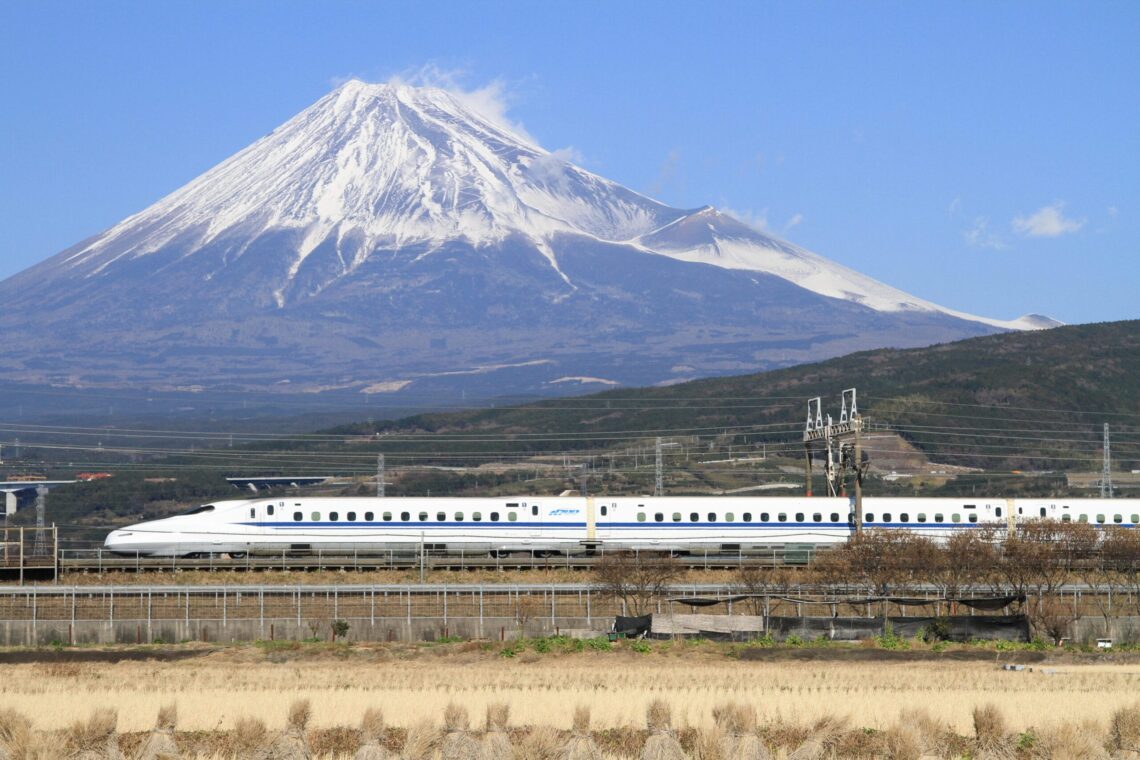
Best Way to Navigate in Japan: The Complete Guide to Getting Around in Japan
Japan. The Land of the Rising Sun, and sushi, and anime, and origami, and loads of other things. Transportation sounds like the least inviting among these tantalizing images. But don’t you worry. I’m here to explain how to navigate the transportation system in Japan like a pro.
Japan’s transportation system is complicated enough to make sense of. The bustling big cities are in stark contrast to the tranquil rural areas and people in many areas speak little English. All in all, navigating across this country could be baffling, especially for first-time travelers. Fear not! Despite being complex, the transport system will actually help your cruising along more easily once you get the hang of it. And, here I am to offer you a complete guide about Japan’s transportation system.
Quick Navigation

Ready to explore further? Visit the full Japan Travel Guide for routes, destinations, and essential travel advice.
The Complete Guide to Japan’s Transport Systems
Getting a grasp of the transportation of another country is tough, and it’s particularly tougher in Japan because the country has a complex transit system. But this brief discussion on all the available transport modes will clear your confusion. The system consists of:
- Air Travel
- Public Road Transportation
- Railways
- Subway
- Bus Service
- Private Road Transportation
- Rental Cars
- Taxis
- Bicycle
- Water Transportation
Here are brief discussions on each transportation modes:
Air Travel
Japan boasts of an extensive air service that is quite reliable too. It’s the best options for traveling to the country’s distant islands or covering a long distance.
Some flights are even cheaper than shinkansen (bullet trains) for the same destination.
The good news is all local carriers provide the option of selecting ‘English’ on their websites. So, tourists will have no problem checking prices, finding available flights, and booking tickets.
Japan Airlines has the most extensive domestic network under its belt and its close competitor is All Nippon Airways. Budget travelers could opt for Jetstar or AirAsia as these low-cost carriers offer 10 to 20 percent lower fares than the mainstream operators.

If you want to grab some discounts‒
- Take the special fare offers and air passes available for foreign visitors
- Purchase tickets as early as possible (one or two months in advance)
- Choose round-trip rather than one-way
- Go for early morning and late flights (approximately 10%-20% lower)
- Avoid peak travel seasons
Public Road Transportation
This section covers trains, subways, and buses. Getting an IC card will allow you access to nearly all bus, train, and subway services in most large cities in the country. Use this single card to pay transportation fares and pay bills at restaurants, shops, and vending machines.
Railway stations sell IC cards at ticket counters and ticket machines. The same ticket machines can be used for recharging the card. Every time you make a payment, a small display on the card reader shows the card’s balance.
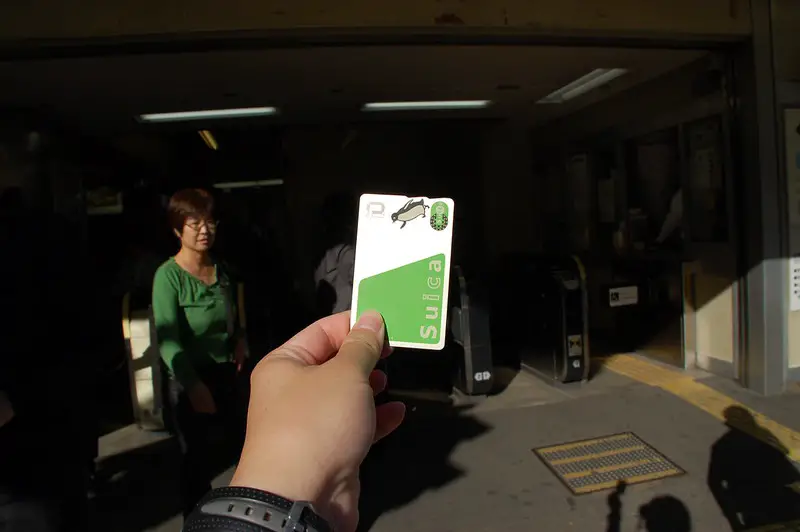
Don’t want to use an IC card? No worry. You can still purchase tickets at ticket machines, ticket counters, and online (by visiting the respective service provider’s website).
Railways
An extensive network of rail system makes it a breeze to explore large cities and metropolitan areas. Japan Railways operates nearly 70% of the trains, and some private railway companies are in charge of the rest.
Trains are fast, reliable, and most Japanese people prefer them for getting around.
Apart from the standard trains operating in regular hours, there are:
- Shinkansen (high-speed bullet trains)
- Night trains
Shinkansen
Running at up to 320 km/h, bullet trains connect Tokyo with most of the major cities. These trains are highly comfortable with spacious seats, food carts, Wi-Fi, and other facilities. They have never been in a deadly accident since the starting of operation, which is remarkable.
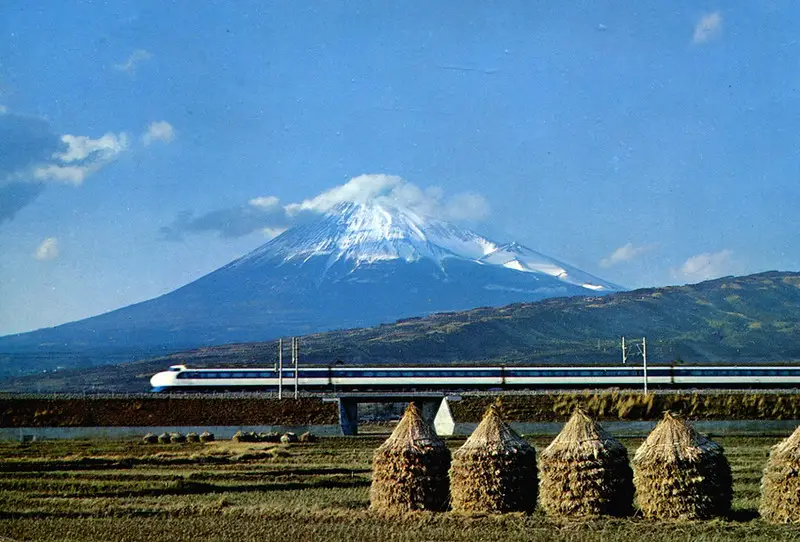
Night Trains
Currently, there are only two night trains, known as the Sunrise Seto and Sunrise Izumo, operating in Japan, covering a few routes between Tokyo and Okayama. You need to make a booking in advance to travel on these trains.
Railway Timetables
There are a few websites and apps available to get the accurate timetable of trains. Purchasing a printed railway timetable sold in kiosks and bookstores across the country is another option. Be sure to buy one printed in English.
To get some discounts, there are two options:
- A nationwide Japan Rail Pass
- A regional rail pass
Point to Note: Most of these passes are available for foreign visitors, not residents of Japan.
Japan Rail Pass is the most suitable option for those who have a plan to visit more than one region. It offers unlimited nationwide travel on all JR trains along with selected JR buses and the JR ferry to Miyajima. Packages are available for 7, 14, and 21 days at prices way cheaper than what you spend without a pass. Use the Rail Pass Calculator to find out if the pass is enough to pay off for a particular trip.
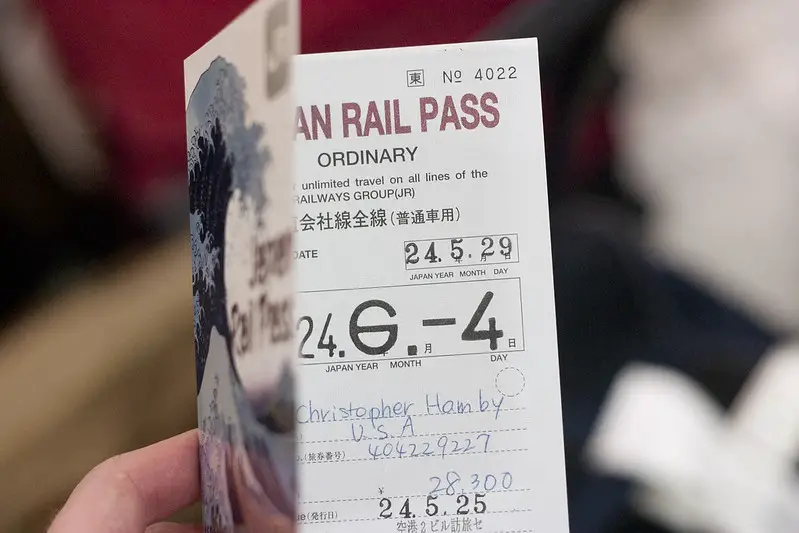
For seasonal travelers staying in Japan for a few days, JR Seishun 18 Kippu seems to a more reasonable option. It offers five days of unlimited nationwide travel on JR trains.
| Time | Purchase Period | Validity Period |
| Spring | 20th February‒31st March | 1st March‒10th April |
| Summer | 1st July‒31st August | 20th July‒10th September |
| Winter | 1st December‒31st December | 10th December‒10th January |
The regional passes are available for these following regions:
- Hokkaido
- Kanto/Tohoku
- Kanto
- Hakone/Izu/Mt.Fuji
- Chubu
- Kansai
- Chugoku
- Shikoku
- Kyushu
Subway
Almost all big cities have their own subway networks connected to other rail systems. It’s a safe, efficient, and budget-friendly mode of transportation to get around urban areas.
The metros start their operation from 5 in the morning and keep running trips until midnight. Women-only carriages are available (stop in front of a pink-sign platform) during rush hours (between 8 and 9 in the morning).

Don’t know Japanese? Don’t worry. Most subways give announcements in English too. And, each carriage has an electric board to display upcoming station’s name in both Japanese and English.
Bus Service
You can put Japan’s bust system into two categories:
- Short-distance or local buses
- Long-distance or highway buses
Local Buses
In large cities like Tokyo and Osaka, people seldom use local buses because of the excellent rail and metro service. But they rule over cities where train networks are fewer. Also, buses are the primary transportation option in the countryside, smaller towns, and national parks.
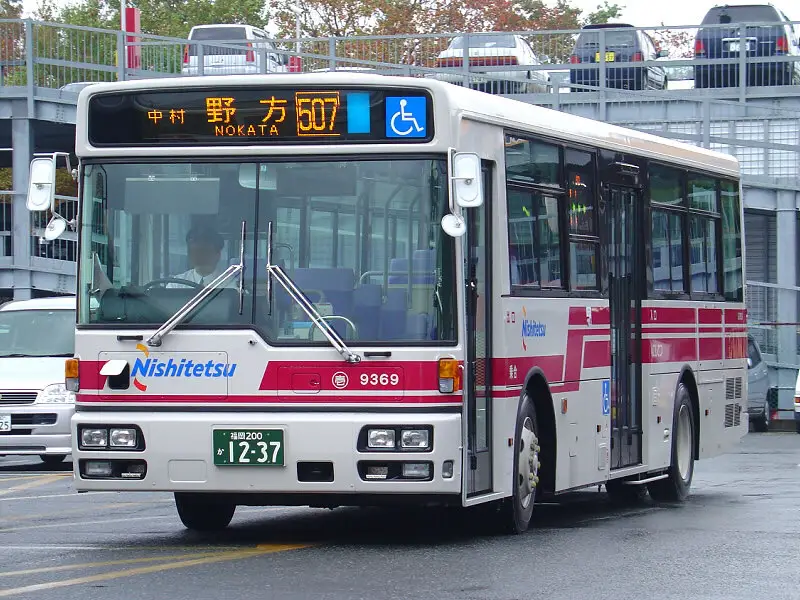
As various companies run operation in this sector, there are different ticketing systems. You will get English signage, timetables, and announcements, but not every bus company provides this facility.
Fare is determined according to the distance between stops, but a flat fare rate is applied in many cities. For example, you will pay the same fare for traveling to any stop in Kyoto.
Highway Buses
Dozens of highway bus companies compete to provide people a cheaper alternative to trains for traveling from one city to another and connecting the islands of Shikoku, Honshū, and Kyūshū. Sure, they are slower than express trains but are highly reliable and have routes to some mountains and rural destinations where trains don’t.

A large network of overnight and daytime highway bus lines is zigzagged across the country. There is at least one bust company operating in every large city or prefecture. Competition is fierce in popular routes such as lines to/from Tokyo or Osaka.
Unfortunately, most bus companies don’t have an English-version website. A few that offer online reservations in English are Willer Express, Japan Bus Online, and Kousokubas.
To get some discounts, take advantage of bus passes:
| Pass Name | Covered Areas | Package Type |
| Japan Bus Pass by Willer Express | Nationwide | 3, 5, and 7-day versions (no condition to be used on consecutive days) |
| Hokkaido Bus Pass | Hokkaido (selected bus routes) | Unlimited (3 or 5 consecutive days) |
| Tohoku Highway Bus Ticket | Tohoku Region (over 100 highway and local bus lines) | Unlimited (2 or 3 consecutive days) |
| Shoryudo Highway Bus Ticket | Chubu Region (selected highway and local buses) | Unlimited (3 or 5 consecutive days) |
| Sun Q Pass | Kyushu Island (highway and local buses) | Unlimited (3 or 4 consecutive days) |
Private Road Transportation
You may choose to walk for shorter distances but bicycle will be a better option. If you are traveling with your family or a group, taxis and rental cars will be more suitable.
Rental Cars
Public transportation schedules are few and far between in some small towns and rural areas. Rental cars could be a good option to navigate these places. The plus side is you can carry a lot of luggage and travel with family or friends will lower the costs. But rental cars are not a practical option in big cities due to heavy traffic and expensive parking.
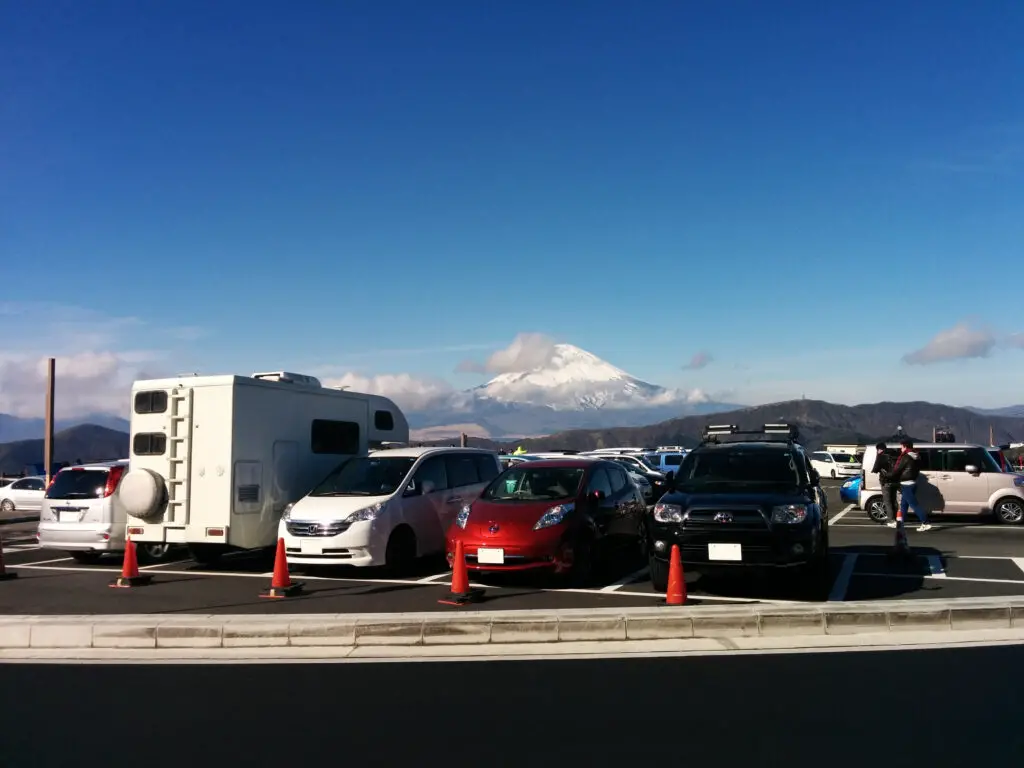
For tourists, car renting requirements include minimum 18 years of age and holding an International Driving Permit (IDP). You need to get the permit from your home country before entering Japan.
Several rental companies are operating in Japan. Most of them, including TOYOTA Rent a Car and Times CAR RENTAL, offer reservations via phone or online in English.
Keep in Mind: Driving in Japan is on the left side of the road, unlike the United States and many western countries.
Taxis
Of course, taxis are more expensive than public transportation, but they can be your savior around midnight when buses and trains don’t operate. They are also a good option in the countryside and smaller cities. With a taxi, cut the waiting time during peak hours and busy days.

There are three types of taxis:
- Large taxis → 2000cc+ engine capacity → up to 5 passengers
- Medium and small taxis → 2000cc or less engine capacity → up to 4 passengers
Taxis in Japan come in various colors. Apart from the traditional yellow seen in other countries, you will find them in black, white, orange, turquoise, and rusty red, with a parallel line painted across the body. The black-painted variant is high-grade, offering a little more deluxe cabin features.
Taxi stands can be found nearby railway stations or you can signal one to stop on the road. Payments are accepted via IC card, credit card, and cash. Calculate the fares by using Taxisite (only in Japanese).
Point to Note: Don’t tip the driver, and thank him/her when getting out.
Bicycle
Bicycles are popular in Japan and tourists can rent them in all major tourist destinations. Most rental shops are located at train stations and renting does not require anything more than a deposit and/or a photo ID. Some shops may ask for the address of the place you are currently living in.
The most popular bicycle type is mamachari, which is a basic bike with just one gear. Other types, including electric, mountain, road racing, and foldable bikes, are slowly gaining popularity.
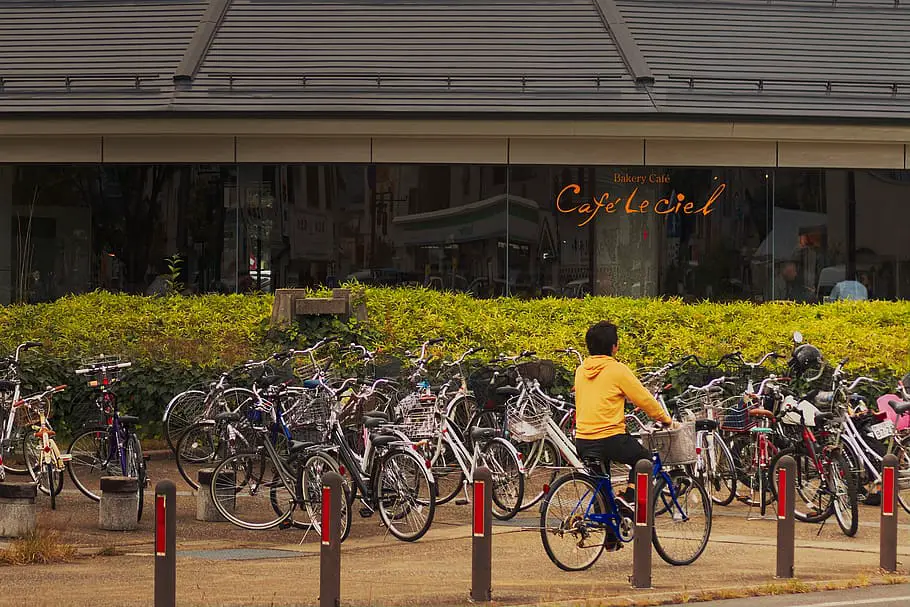
You need to ride the bike on the streets, but there are some dedicated sidewalks too. Helmets are not mandatory and look for dedicated parking places at nearby train stations and shopping malls.
Water Transportation
Japan is a land of islands. So, it makes sense that the country has a broad network of ferries. Plus, these small ships are the only way to reach many small islands.
They are not inexpensive and often not on time, but the experience is unique. If you are outgoing, you will definitely love the common dining halls and communal bathhouses. Some may even have karaoke arrangement!
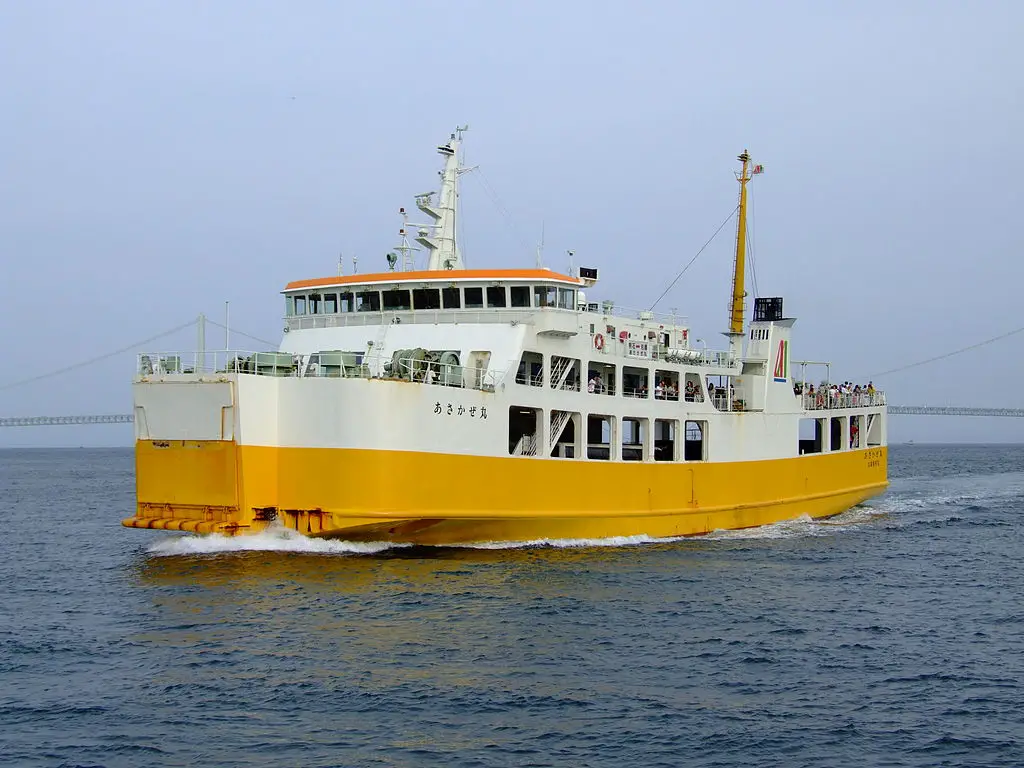
Arranging from the cheapest to the most expensive, you can divide the traveling arrangements into four classes:
- Second Class (without bed): You have to share a common space with other passengers. There will be tatami mats or a carpet on the floor.
- Second Class (with bed): A dorm system resting arrangement with each room housing 4 to 12 beds.
- First Class: Every single room has two to four beds.
- Special Class: The most expensive option. You will get to stay in a room with two beds.
Ticket booking is available online and phone or you can purchase it at the ferry terminal. To book online in English, use Direct Ferries.
Point to Note: A ferry transports everything—people, vehicles, and cargo.
Best Websites and Apps for Navigation in Japan
So, we now have an idea about the transit system in Japan. But it’s still not easy to go from point A to point B when you are new in a country. Checking each individual company or service provider’s website is not feasible. Wouldn’t it be better to get the timetables, available routes, fares, and other information in a single place?
I have compiled a list of a few websites and apps that will bring Japan navigation into your palm.
Helpful Websites for Japan Navigation
Here is a list a few websites that offer you a seamless experience of planning your travel by using Japan’s public and private transport systems.
i. JNTO
The official website of the Japan National Tourism Organization is an encyclopedia of visiting Japan. It’s currently available in 25 languages, including several versions of English. The design is so user-friendly that you get organized information no matter what kind of trip you have in mind.
For navigation, check the Plan Your Trip section that has a dedicated segment for ‘Transportation in Japan’.
The same section also features information for first-time visitors, airport access, and getting to Japan. There is a ‘Practical Travel Guides’ segment featuring PDF travel brochures of regional guides, events calendars, and timetables of buses and trains.
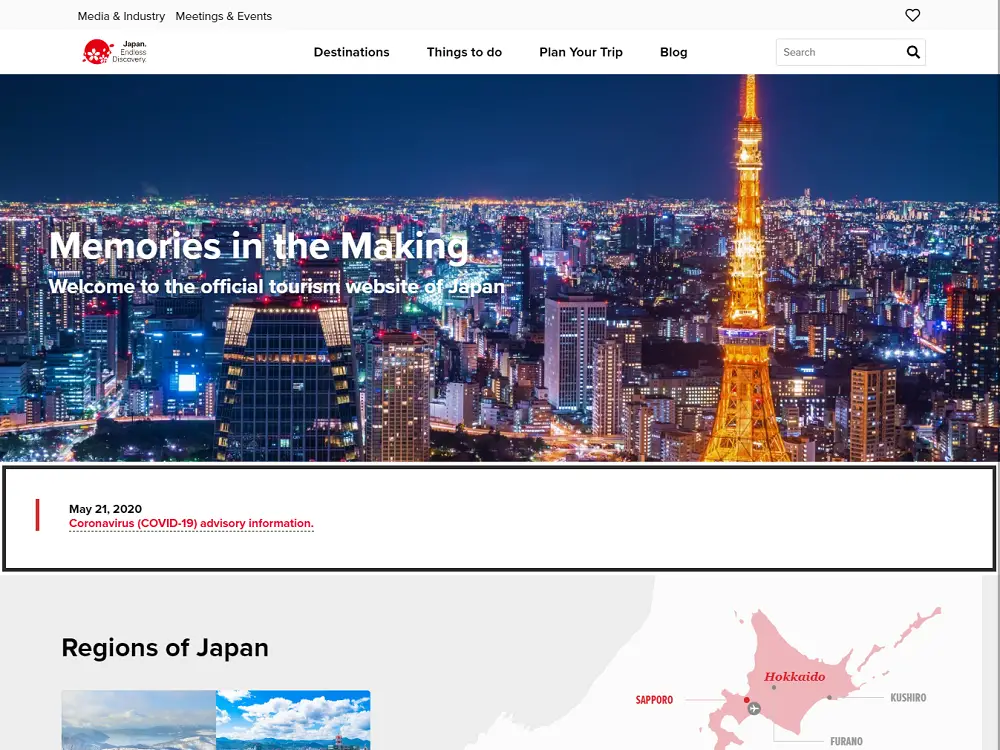
Official Website: https://www.japan.travel/en/
ii. Willer Express & Japan Bus Online
If you need information about only bus services, both these websites (available in an English version) can be handy.
Both Willer Express and Japan Bus operate in thousands of routes across the country and they offer competitive prices in comparison to other transportation services.
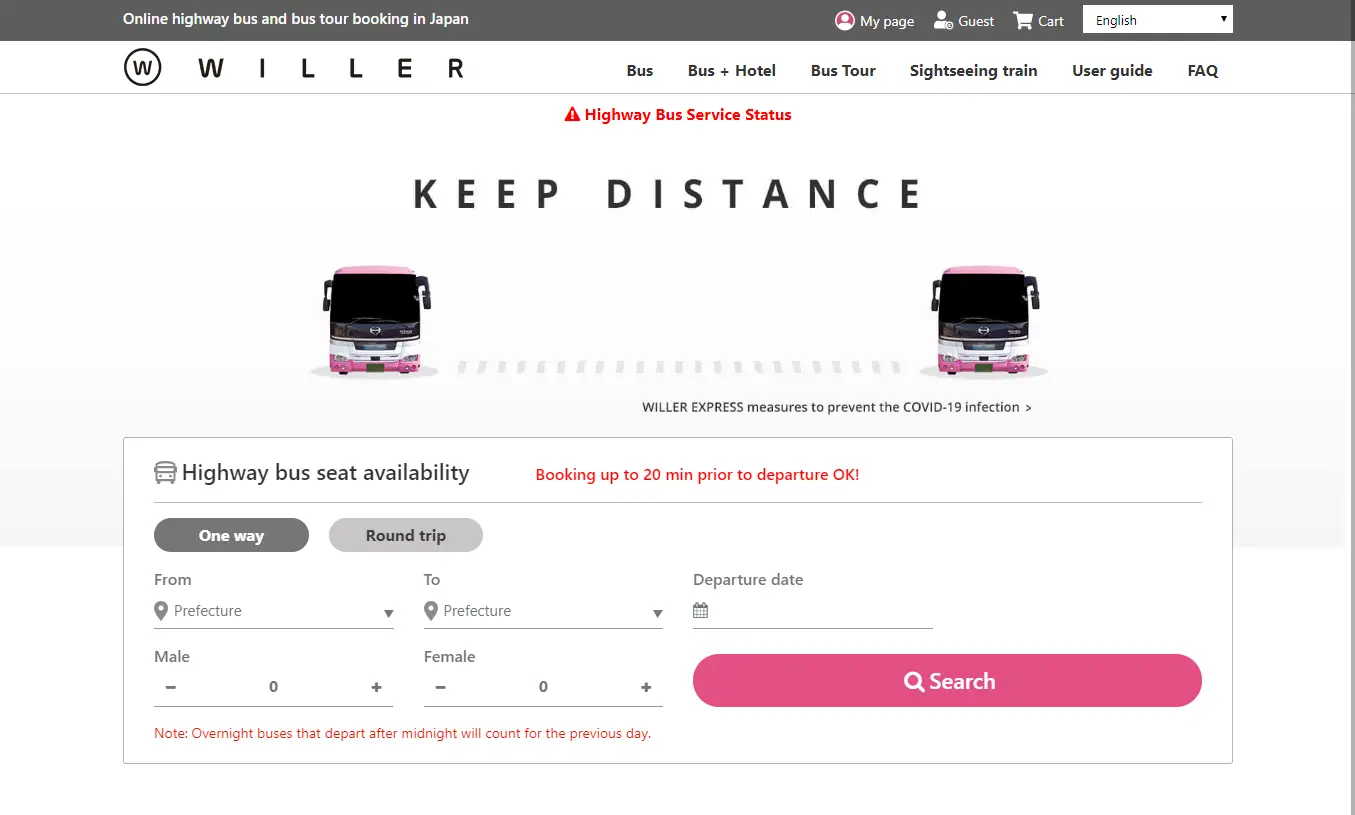
Both websites have a user-friendly interface and a simple search option so you can easily find a suitable service on your desired departure date. You can also book tickets directly from the website.

Willer Express Website: https://willer-travel.com/en/
Japan Bus Online Website: https://japanbusonline.com/en
iii. Rentalcars.com
If you want to travel remote places distant from busy cities on your own terms, renting a car sounds like a practical option. Imagine driving on a quiet road with panoramic views on both sides. Soul curing, right?
I’ve mentioned earlier that various car rental companies operate in Japan and they have their own English-version websites with a booking facility. But Rental Cars offers curated results for available options from all these operators.

The homepage has a search box with several options that you can use to tailor your search. There are several language options and you can check the fares in almost all currencies available in the world.
This website is not dedicated to Japan, but it covers all Japanese major cities. It saves you from visiting the individual websites of all rental companies. How cool is that?
Official Website: https://www.rentalcars.com/
Best Apps for Navigation in Japan
For those who don’t feel comfortable browsing a website, here’s a curated list of five top apps that make navigating Japan a breeze.
i. Google Maps
Undoubtedly the best maps app no matter which part of the world you go. This handy app can give you direction to any landmark, restaurant, store, or bus stop. For Japan, it provides information about train routes with precise timing.
With an easy-to-use interface, it comes with tons of features. In fact, you can access Google’s data pool, which means it takes a few taps to get detailed information about anything.

I cannot vouch for its offline functions, and you don’t get to see your customized drop pins, which makes way for Maps.me. With excellent offline features, it can be offline alternative to Google Maps.
All you have to do is download your destinations to get offline access to area or city maps, saved places, and custom drop pins.
Google Maps Download: iOS/Android
ii. Japan Travel by NAVITIME
Another app with all-inclusive features like HyperDia. Covering almost all transport services, Japan Travel is especially useful for navigating the complex transit system in large cities.
Based on your input, it will show all available directions for traveling from point A to B. It shows train delays, timetables, station lists, and platform numbers, which is a big help to decode the complex transportation of big cities. Offline functions are limited so you have to have a data connection.
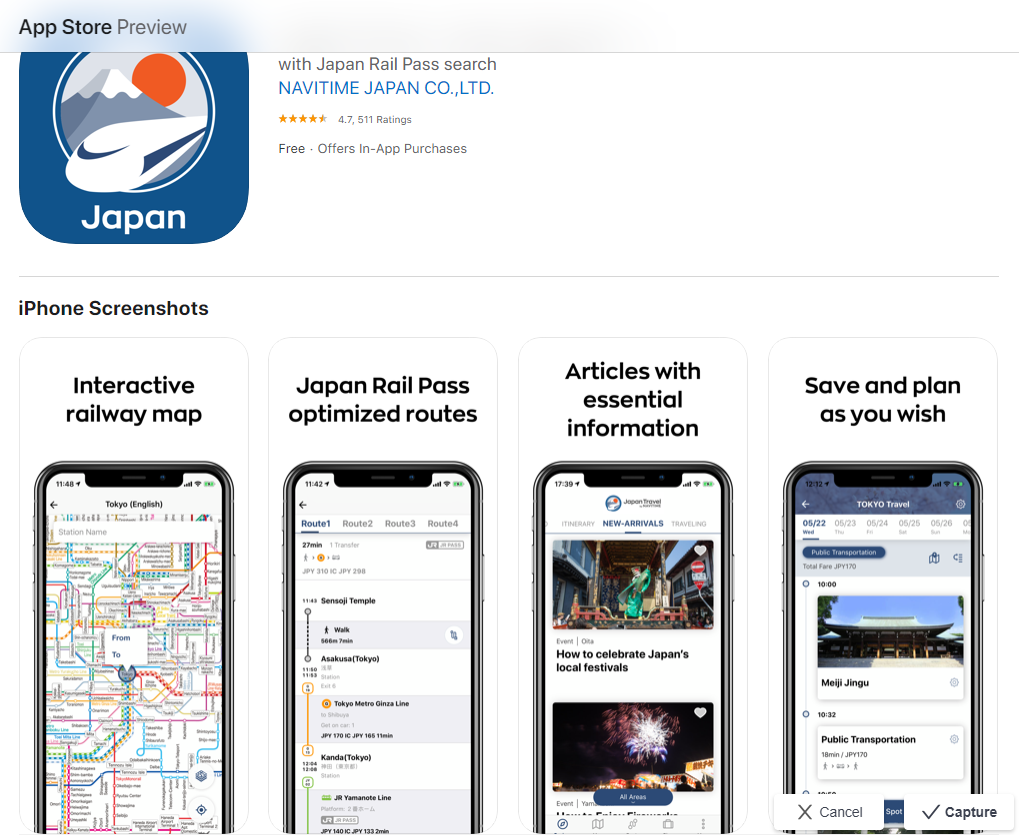
Japan Travel is a free app with a couple of paid features, including voice navigation, searching alternative routes, and rain and snow forecast.
Japan Travel Download: iOS/Android
iii. Japan Transit Planner by Jorudan
The original Jorudan app is hugely popular among the local Japanese. As that app does not have any English version, the company has released this standalone Japan Transit Planner app in 12 languages for tourists visiting Japan.
Just like the Japan Travel app, this app is free for users except for some paid features. The free features are enough to plan your routes if you decide to stick to trains and airplanes.
It offers a bunch of filtering options to include or exclude Japan Rail Pass, non-JR trains, peak reserved seats, Tokyo Subway Ticket, and more.
Japan Transit Planner Download: iOS/Android
iv. Uber
Uber operates in Japan and costs more than a taxi. However, it could be a wonderful option for late-night transport since you don’t have to pay the 20% surcharge applicable for regular cabs operating between 10PM and 5AM.

This ride-hailing service could be cost-effective if you travel with a group. Most regular cabs can carry up to 4 passengers, but Uber has a collection of vehicles that can carry 5 or more people.
Tips to Navigate Big Cities and the Countryside
With a guide to Japan’s transit system and suggestions about several helpful websites and apps, you probably feel confident about planning a trip and getting into out there.
Wait. I’m not done yet.
If you have decided to stick to big cities or just remote areas, these tips may help.
Best Ways to Navigate Big Cities (Tokyo)
All big cities in Japan have a world-class public transport system consisting of trains, buses, and subways, with options for cycling, walking, or renting a car.
I’ll show you the ways to get around Tokyo, the country’s capital. Transportation modes for other big cities are quite similar, with a few minor exceptions.
Tokyo is a large city that has several urban hubs, which are like self-sustaining smaller cities. Central Tokyo has a well-organized transit system to/from these hubs such as Shinjuku, Shibuya, and Roppongi.
International travelers can get there by air and land in either Narita Airport or Haneda Airport. Narita mostly handles international flights and Haneda is on the charge of the majority of domestic flights. Dozens of different companies run the train, subway, and bus lines in Tokyo.
a. Train Lines
The JR East company operates the city’s major train lines that cover mostly central Tokyo. The JR Yamanote Line, which accepts the Japan Rail Pass, covers the city’s major urban nodes, except for Roppongi and Asakusa. So, you can travel to the happening spots of Tokyo city at a discounted fare.

The other four lines are the Keihin-Tohoku Line, Chuo/Sobu Line (Local), Chuo Line (Rapid), and Saikyo Line.
A few more railway companies operate here in Tokyo. They mainly run lines to connect the city with its outer regions and enclosing prefectures.
b. Subways
Two companies are on the charge of Tokyo’s subway system. Tokyo Metro operates nine lines and the rest four are under the control of Toei Subway. Except for holding an individual ticket, riders don’t need to worry about which line to take because they are interlinked and cover almost all across central Tokyo.
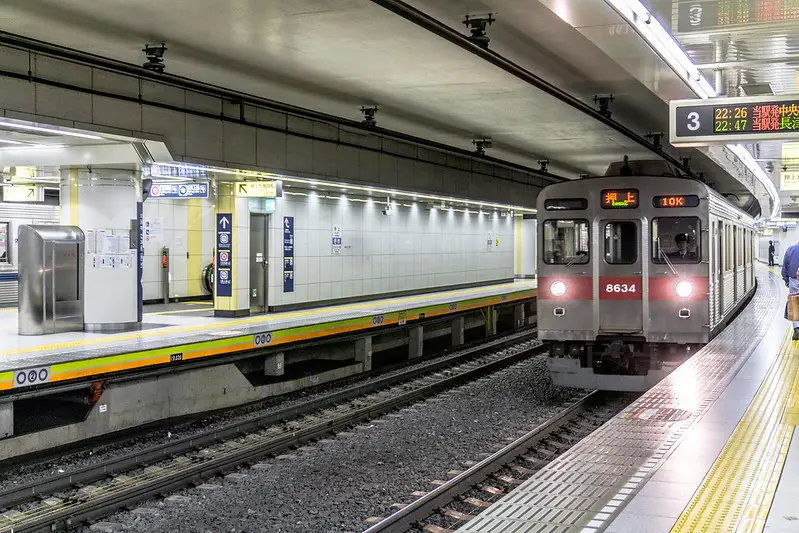
The Tokyo Metro Subway Map app is very convenient and is available in English along with a few other languages. It works offline, which is a huge plus, and serves both iOS and Android users. You can navigate the networks of both subway companies through this app.
You can select your departure and arrival stations and search for the nearest station from a popular tourist site. There’s a feature that suggests the best exit to leave the station for the nearby tourist spot, which is helpful for a foreigner who may feel lost amid the tangled web of train exits.
c. Bus
Bus services are less popular in Tokyo because of the extensive coverage of the train and subway systems. Toei Transport Network owns most of the local buses. A few more public and private companies are there too, running buses on special routes such as Tokyo Skytree and Shitamachi.
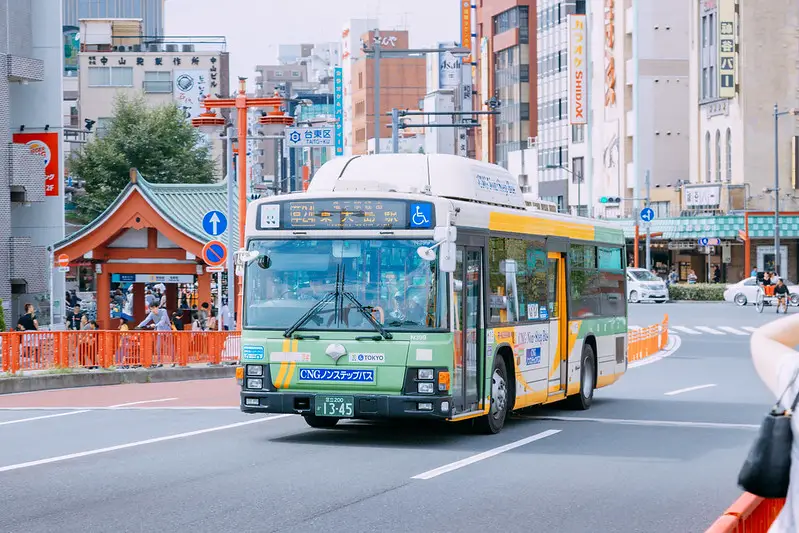
Most bus rides inside the city will charge a flat fee—¥210/adult and ¥110/child. Using an IC card is the easiest, hassle-free way to pay the fare.
The website of the Toei Bus offers a Bus Map and Route Finder option. Use it to get bus route information and do customized searches to find buses available to your desired location. The page also provides information about available passes and the ways to take a bus.
d. Taxis
Taxis in Tokyo are expensive but they are everywhere and easy to flag down. They are a convenient option when you are carrying lots of bags or traveling with a group or children.

The easiest way to find them is to look outside bus stops, train stations, and shopping malls. You can use the free GO app to hail taxis from various companies, like the Uber service. Just tapping on a map is enough to call a taxi to your pick-up point.
How to Pay for the Tickets
Apart from the Japan Rail Pass and prepaid IC cards, other ticketing systems include:
One-day Economy Pass (¥900): Unlimited single-day use for both subways.
Tokyo Subway Ticket (1 day/ ¥800, 2 days/¥1200, 3 days/¥1500): Unlimited rides on both subways (not applicable for JR trains).
Tokyo Free Kippu (¥1600): Unlimited one-day use for subways, JR trains, and Toei buses and streetcars.
Toei Bus One-Day Pass (¥500/adult and ¥250/child): It offers unlimited rides on Toei buses across Tokyo’s 23 special wards.
Tokyo Metro 24-Hour Ticket (¥600): Applicable for Tokyo Metro lines only. Unlimited use for a day.
Toei One-Day Pass (¥700): Unlimited use of Toei subway lines, buses, and streetcars.
Tokunai Pass (¥760): Unlimited JR train rides in the central Tokyo area.
JR Tokyo Wide Pass (3 days/¥10,180 for an adult and ¥5,090 for a 6-11 year child): This pass is a good money-saving option for tourists. You can enjoy unlimited rides on all JR trains and some non-JR trains in the Kanto Region.
Best Ways to Navigate the Countryside
Where there is an abundance of transportation options in the urban areas, the story is different in the countryside. Life is more laid-back there, and the same goes for the transit system.
The experience can be rewarding as rural Japan has breathtaking scenarios and many significant landmarks like major shrines and temples.
a. Trains Rides are Limited
Unlike by-the-hour train schedules in urban centers, the number of train rides is fewer in the countryside. Also, they stop at every station along the route. The signs are mostly in Japanese. Save the stoppage name of your destination on your phone so you don’t miss it.
Train journeys in rural Japan are a pleasant experience because of the scenic surroundings and local trains sometimes cruise along the coast and wind through mountains.
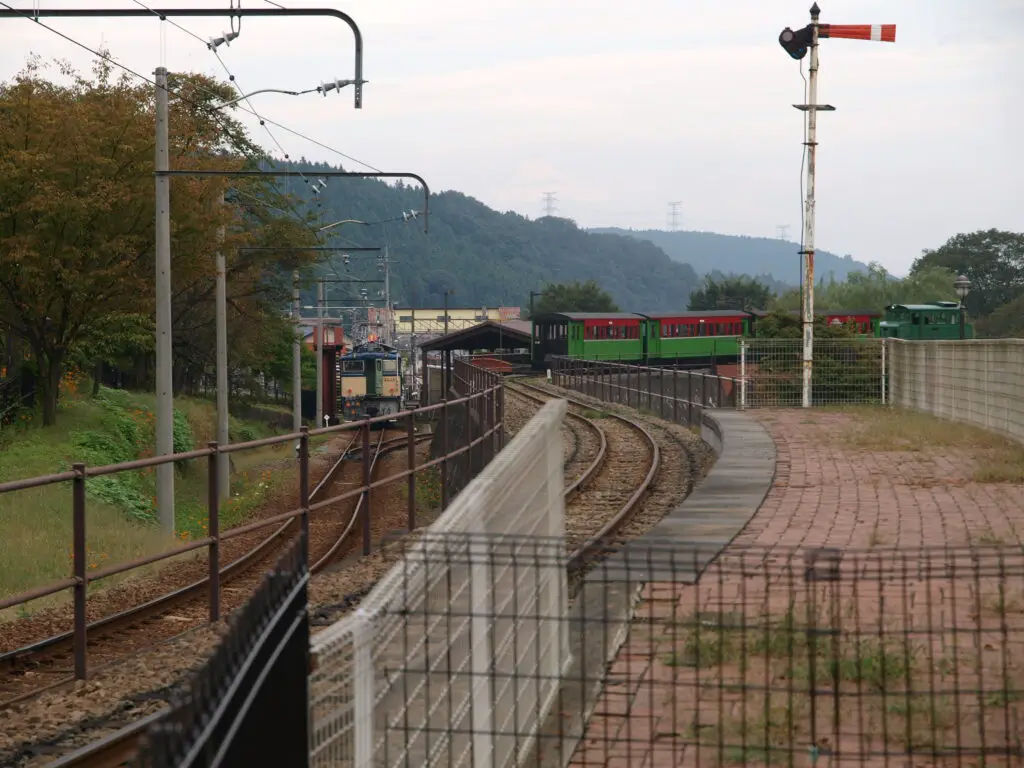
To get the schedules, available lines, and other details, use Google Maps or HyperDia app.
b. Take Preparation for Bus Rides
The bus service is more frequent than the railways in the countryside. They also reach some remote places where trains don’t.

Bus drivers in the countryside don’t understand English, so you should show them the bus stop name of your destination written on a piece of paper. Do your homework about bus timing and routes before planning a trip.
c. Rent a Car
Renting a car would be a better option for discovering the nooks and corners of rural Japan, where public transportation cannot reach. It allows planning the itinerary according to your terms, instead of playing catch-up with few bus and train services.
Driving on the smooth roads while enjoying the picturesque landscape on both sides will be a lifetime experience.

Just remember to drive on the road’s left side, like the British system. Also, follow the speed limit and be prepared to pay tolls in some expressways.
d. Maps Can Help
Data reception is unstable in rural areas, so Google Maps may not be of much help. Maps.me could be an excellent choice as downloading an area map before the journey will keep you on track.
However, you should always take the maps with a grain of salt, particularly for remote areas.
An actual Map (available in bookstores across the country) might be helpful, but finding one in English will be a challenge.

However, these maps are an excellent resource for finding trailheads in remote places.
Conclusion
Japan’s transport system is somewhat similar to the prevailing system in most developed countries. It seems a little complicated because several companies operate in different lines instead of the government or a central company running everything. I hope this travel guide comes handy in figuring out the transport options and navigating in Japanese cities and countryside easier.



